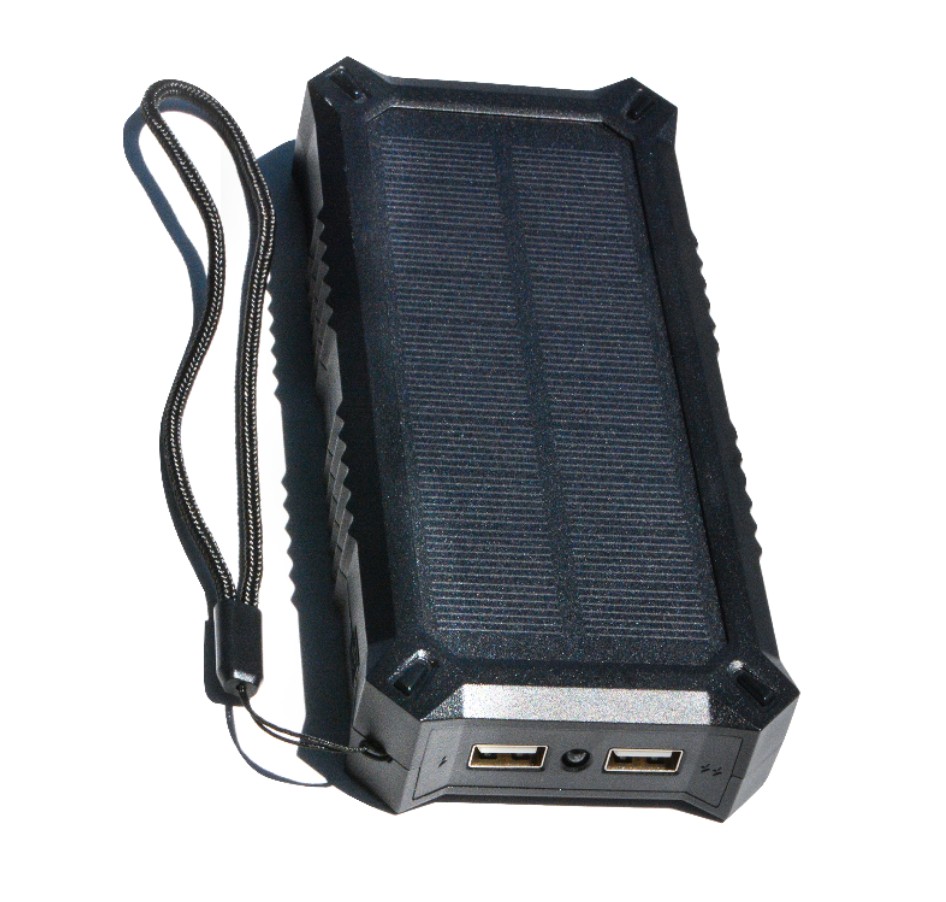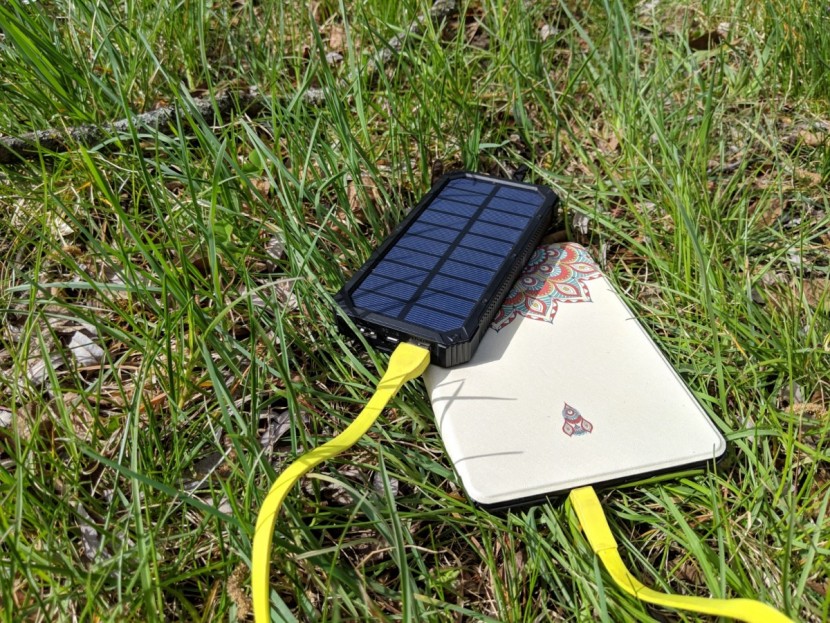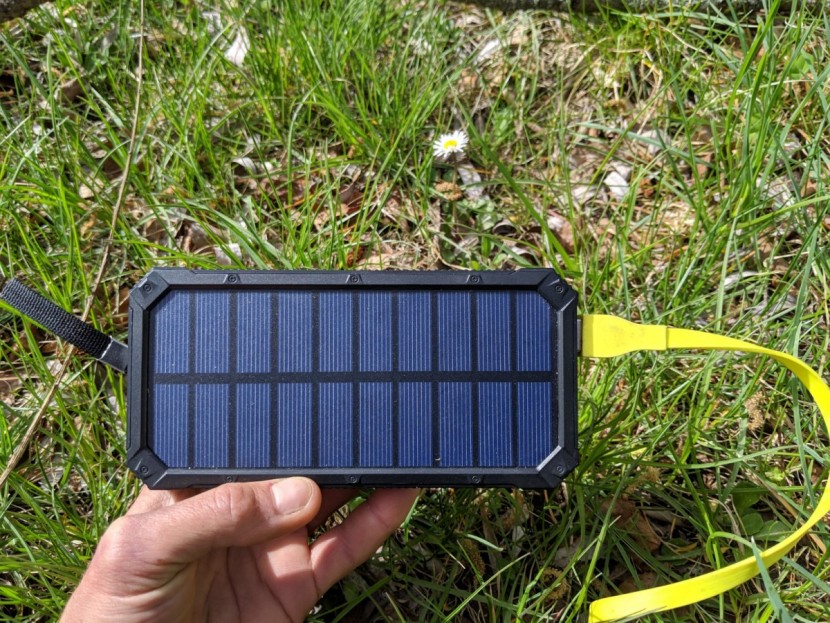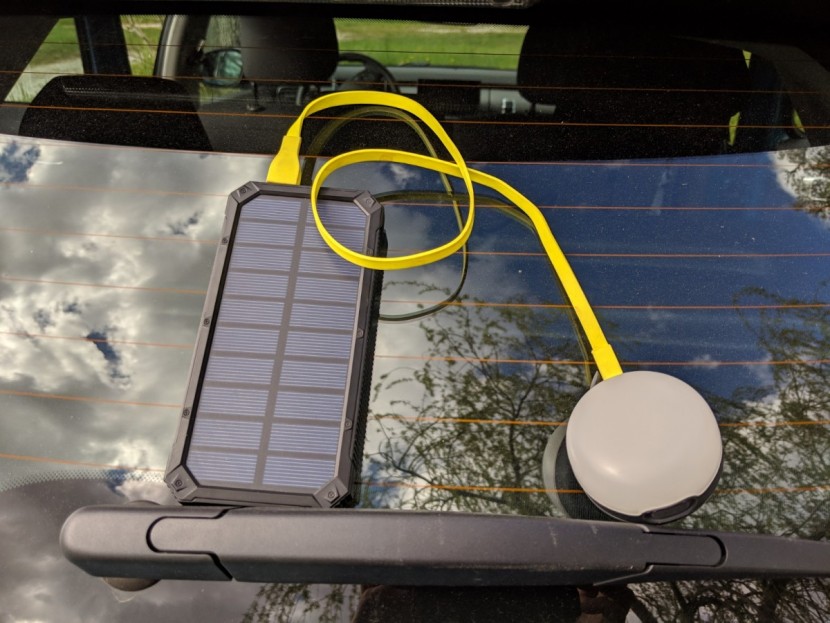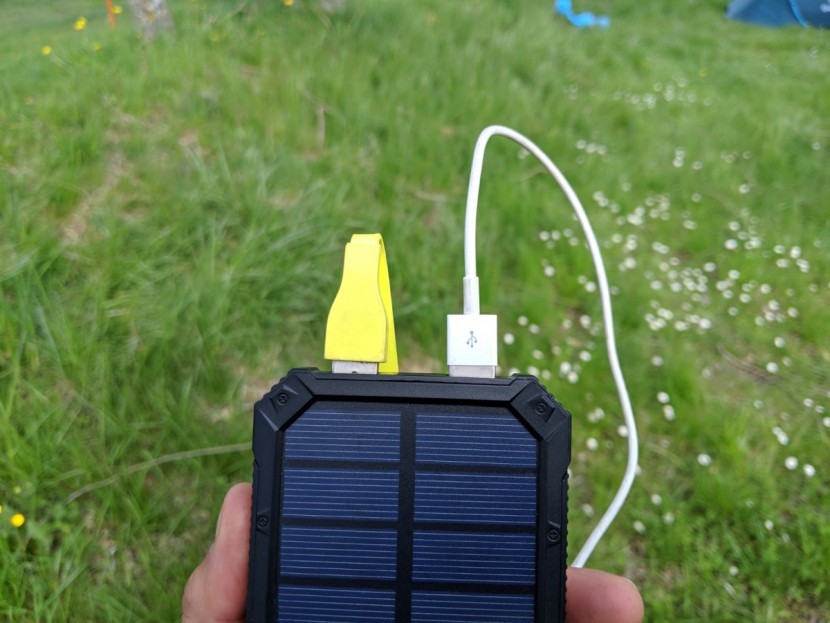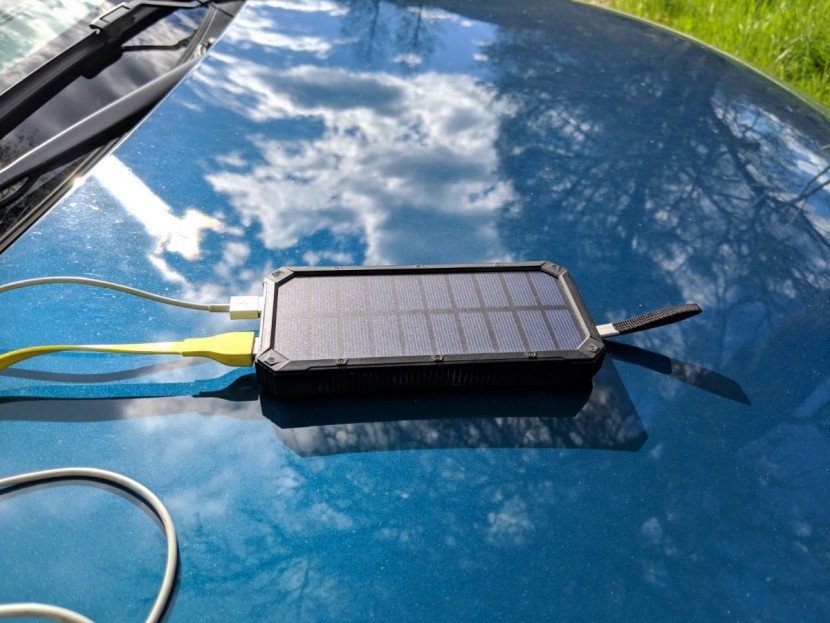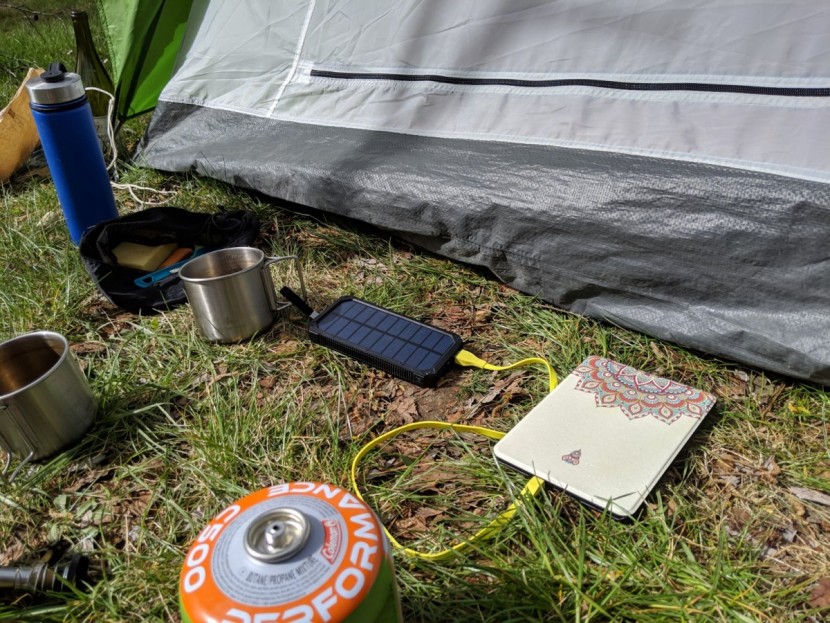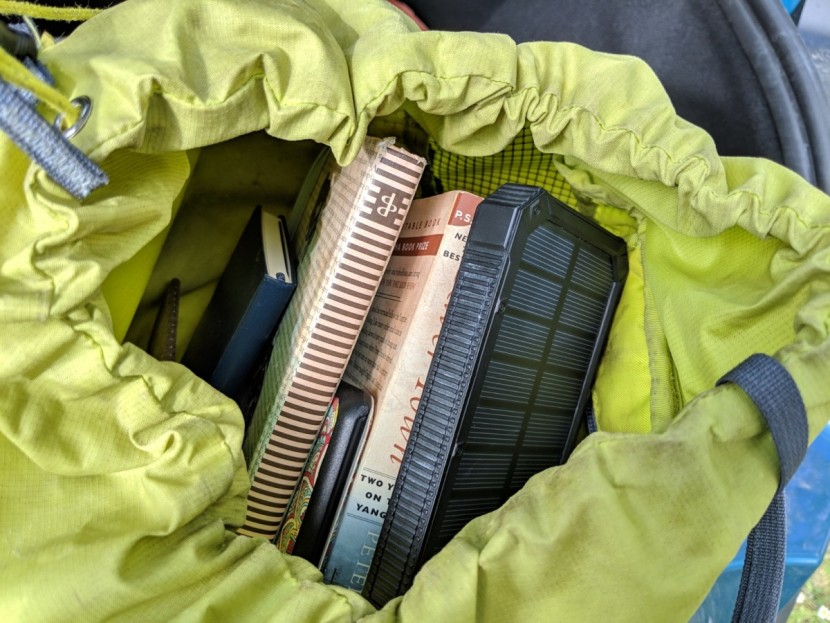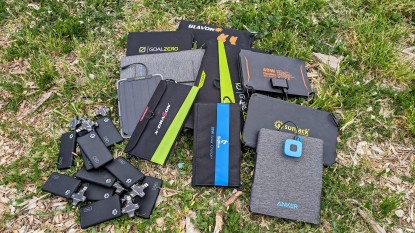Renogy 15,000mAh Review
Our Verdict
Our Analysis and Test Results
With relatively fast charging speeds, the Renogy 15,000mAh is a capable, compact panel that keeps devices going over a long weekend or when traveling. We loved this panel for traveling, as it fits in our carry on luggage easily and kept our phone charged when we were away from power outlets in the airport or train station. We also found it handy to use when traveling abroad, since it eliminated the need to find a converter for a power outlet.
Charge Interruption Recovery
This rating metric is a bit challenging to apply to small battery packs with integrated panels, like the 15,000. To attempt to use this battery pack as you would, a traditional solar charger would result in frustration, as a 2W panel doesn't have the same charging capabilities as a 40W panel. One would need to leave this battery pack in the sun for a few hours to see it receive a substantial amount of re-charge using solar.
When able to leave out for hours, we found it best to trickle charge the 15,000 via the power of the sun. When taking this approach, charge interruption isn't an issue because your device will always be getting power from the battery itself, which is, in turn, getting refilled from the sun. If only relying on solar, this panel doesn't do great with intermittent shading due to its small size and low wattage.
Charging Speed
The manufacturer recommends over 75 hours of sun exposure to charge this battery. This information is good to keep in mind when considering the Renogy, as solar is really more of a back-up method of charging. We found it best to charge the battery at home fully and then rely on solar power to trickle charge our devices when out and about.
That said, the Renogy does charge quite fast, and it charged up our Google Pixel 3 phone from 0% to 23% in 30 minutes; we also got five full charges out of the Renogy before draining the battery. This percent increase is actually higher than battery packs we've tested with an even larger capacity. This comparison demonstrates that the Renogy is not only highly efficient and powerful but can hold up against larger battery packs.
Multiple Device Charging Speed
With 15,000mAh of power, the 15,000 from Renogy has no trouble charging two devices at once, as long as the battery is mostly full. We were able to charge our Pixel 3 and a Kindle a decent amount (the phone 5% and the Kindle 9%) over a half-hour period.
This is yet another plus to using an integrated solar panel/battery pack since these small devices are actually able to effectively charge multiple devices at once. Typically, even large capacity panels (20-40 watts), that rely entirely on solar can struggle to deliver enough juice to effectively charge multiple devices at once.
Durability
We were impressed with the durability and construction of the Renogy. The hard plastics used in the construction seem to be a little bit less durable than the battery packs that are encased in soft silicone. That said, we had no issues when it came to the durability of this panel, even when leaving it in the sun for hours.
We've tested Renogy products for years now, and have found that they are typically well-designed and built to last. Some of our previous award winners for durability came from this company. Plus, if you have issues with any of their devices, they have a one year warranty and a robust customer service page on their website.
Weight and Portability
It is in this metric that the 15,000 stands out against its competitors. Typically, these battery packs, especially when they have such a large capacity like the Renogy, tend to be super heavy. This can make it hard to justify even carrying them around town - why add another two pounds to your backpack if it's not necessary?
However, the Renogy is the lightest of the three battery pack/solar chargers in this review. Its total weight is 9.5 ounces, which makes it light by all standards - battery pack or not. It combines excellent output power with a lightweight, sleek profile, making it our go-to for a battery pack with an integrated solar panel.
Value
The 15,000 is a reasonable investment if you are looking for a battery pack. We would recommend buying this product if you plan on fully charging it indoors and using the solar panel as a trickle-charge function. Don't buy this panel expecting it to charge your devices in the sun at a rapid rate.
Compared to larger-capacity solar panels and the other battery pack charge systems in this review, the Renogy is a very reasonably priced device. The other battery packs we've tested tend to come with a higher price tag and have received lower scores across the board in our side-by-side tests.
Conclusion
Its simple design, charging ability, and low overall weight makes the Renogy 15,000 our go-to for a small, portable battery/panel combination, as it kept our devices charged on train rides and in the airport. If you are a frequent traveler, you know that looking for an outlet can be a pain. We got hooked on having the Renogy in our bag to keep our phones charged when access to power was hard to find. This panel is also light enough that we could even see taking into the backcountry on weekend trips to keep phones and cameras topped up.
Like the other battery pack/panels in this review, it takes a significant amount of time (over five hours) to see any increase in battery level using only the solar panels, but it is effective to trickle charge devices with the panel in the sun. It is also reasonably priced and durable and is our recommended choice for a battery/solar charging combo.

